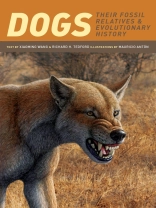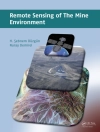Xiaoming Wang and Richard H. Tedford have spent the past 20 years studying the evolutionary history of the family Canidae. Both are well known for having established the modern framework for the evolutionary relationship of canids. Combining their research with Mauricio Antón’s impeccable reconstructions of both extinct and extant species, Wang and Tedford present a remarkably detailed and nuanced portrait of the origin and evolution of canids over the past 40 million years.
The authors cull their history from the most recent scientific research conducted on the vast collections of the American Museum of Natural History and other leading institutions. The fossil record of the Canidae, particularly those from their birth place in North America, are the strongest of their kind among known groups of carnivorans. Such a wonderfully detailed evolutionary history provides access to a natural history that is not possible with many other groups of carnivorans.
With their rich fossil record, diverse adaptations to various environments, and different predatory specializations, canids are an ideal model organism for the mapping of predator behavior and morphological specializations. They also offer an excellent contrast to felids, which remain entrenched in extreme predatory specializations. The innovative illustrated approach in this book is the perfect accompaniment to an extremely important branch of animal and fossil study. It transforms the science of paleontology into a thrilling visual experience and provides an unprecedented reference for anyone fascinated by dogs.
İçerik tablosu
Preface
Acknowledgments
1. Dogs: Methods of Study and the Place of Dogs in Nature
2. The Origin of Canids and Other Doglike Carnivorous Mammals
3. Diversity: Who Is Who in the Dog Family
4. Anatomy and Function: How the Parts Work
5. Hunting and Social Activity
6. Changing Environments and Canid Evolution
7. Going Places: Braving New Worlds
8. Domestic Dogs
Appendix: Canid Species and Classification
Glossary
Further Reading
Index
Yazar hakkında
Xiaoming Wang is a curator of vertebrate paleontology at the Natural History Museum of Los Angeles County and has been studying the evolutionary history of the family Canidae for the past twenty years. In collaboration with Richard H. Tedford, he has published three volumes on the fossil canids of North America.Richard H. Tedford is curator emeritus in the Department of Vertebrate Paleontology at the American Museum of Natural History.Mauricio Antón is a paleontological artist based at the National Museum of Natural Sciences, Madrid. Among his books are, with Jordi Agustí, Mammoths, Sabertooths, and Hominids: 65 Million Years of Mammalian Evolution in Europe and, with Alan Turner, The Big Cats and Their Fossil Relatives: An Illustrated Guide to Their Evolution and Natural History and Evolving Eden: An Illustrated Guide to the Evolution of the African Large Mammal Fauna.












